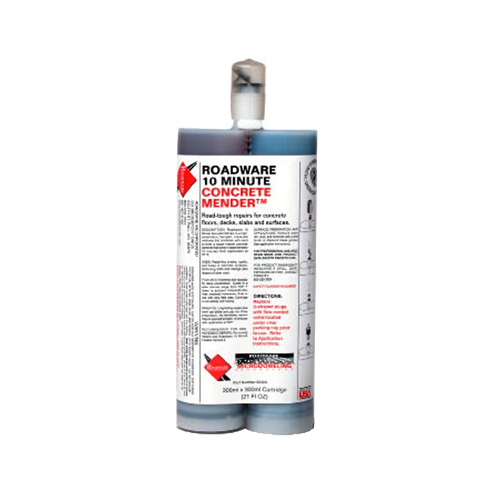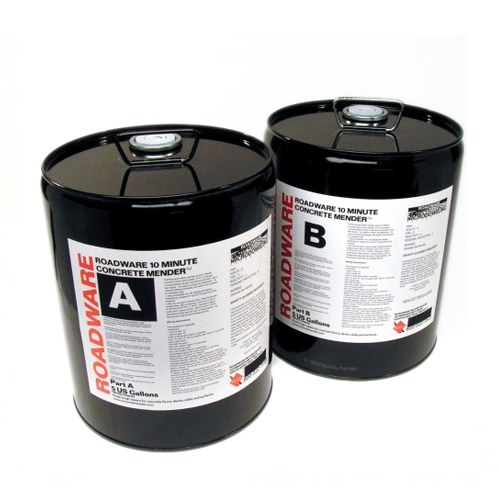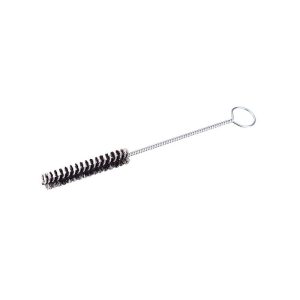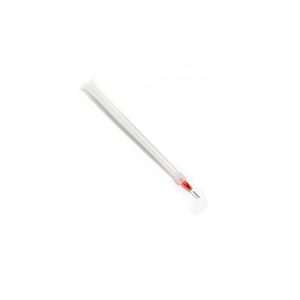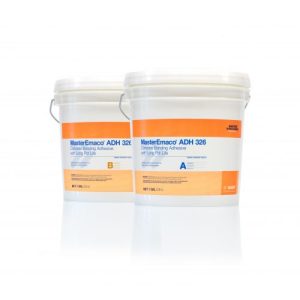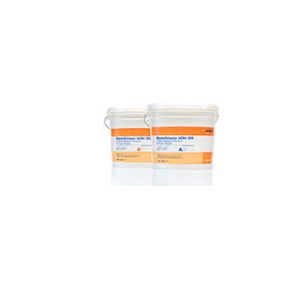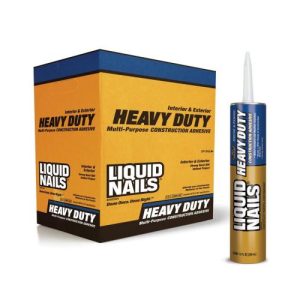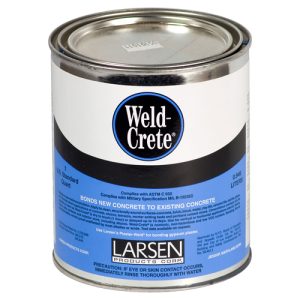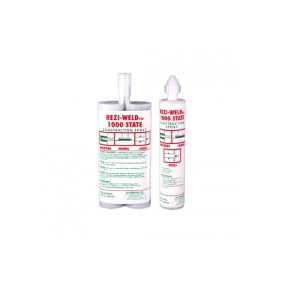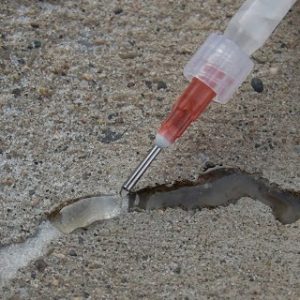Roadware 10 Minute Concrete Mender
ROADWARE 10 MINUTE CONCRETE MENDER™ is a two-part polyurethane that penetrates deep into concrete to make pernament repairs. Nearly thin as water at less than 8cps, Concrete Mender™ actually injects itself into the matrix of the concrete and shores up the existing concrete as well as making the repair. Concrete Mender™ eliminates the bondline as it Microdowels into the concrete. We call it Microdowling™.
- Repairs may be polished in 10 to 15 minutes.
- Repairs will not gum up, tear-out, or smear into the surrounding surface when polished.
- Use with a variety of sands and pigments to achieve different colors and textures.
What makes Roadware 10 Minute Concrete Mender different from other concrete repair products?
|
|
|
|
|
|
|
|
|
|
Roadware 10 Minute Concrete Mender™ has a strong history of repairing shrinkage cracks and spalls in elevated structures such as parking decks, bridges, and airport terminals. Concrete Mender™ is considered a structural polyurethane and can be used where the surrounding concrete is stable.
Structural Polyurethane– A polyurethane based material that restores structural integrity and aggregate interlock to distressed concrete by using low surface tension and low viscosity to penetrate concrete surfaces and cross -linking polymer chains to bond directly to the concrete-aggregate matrix. This bonding action utilizes capillary forces to self-inject polymer chains into the surrounding concrete. This material should have a modulus of elasticity less than the surrounding concrete and should not become brittle over time. This material may be combined with manufactured sand to form a PCC compatible polymer concrete that can structurally repair concrete cracks and spalls.
Advantages– Due to the very low surface tension of the material and low viscosity, complete saturation bonding of cracks can be easily achieved. Minimal prep to remove loose debris is all that is normally required. This can be considered a structural repair if the material is allowed to gravity flow to the full depth of the crack. Manufactured sand or quartz may be introduced into the repair as necessary to prevent under slab ponding and material waste. For repair greater than 0.125 inches, specified sand may be added at a ratio of two parts sand to one part mixed polyurethane as the crack is filled to extend the material and add strength. The sand also brings the thermal coefficient of expansion of the repair material closer in-line with surrounding concrete. Polyurethanes of this nature may be applied in a wide range to sub-straight temperatures making them useful in frozen and cold storage warehouse applications or cold weather application below -20F (-23C). Repairs are typically ready to accept traffic in approximately 10 minutes at 72F (22C).
Limitations- The surrounding concrete must be surface dry, cured for at least 60 days. Finished repairs may, “yellow” in appearance over time when exposed to UV sunlight. In exterior conditions, only low to non-movement cracks should be repaired.
“Roadware Easy Injection and needle tip crack injection costs less to install and is more effective than pressure applied epoxy injection methods.” according to top concrete repair contractors. “We can get in, permanently repair the cracks, and get out in the same time it use to take just to install the old injection ports.”
Visit Manufacturer for More Info

